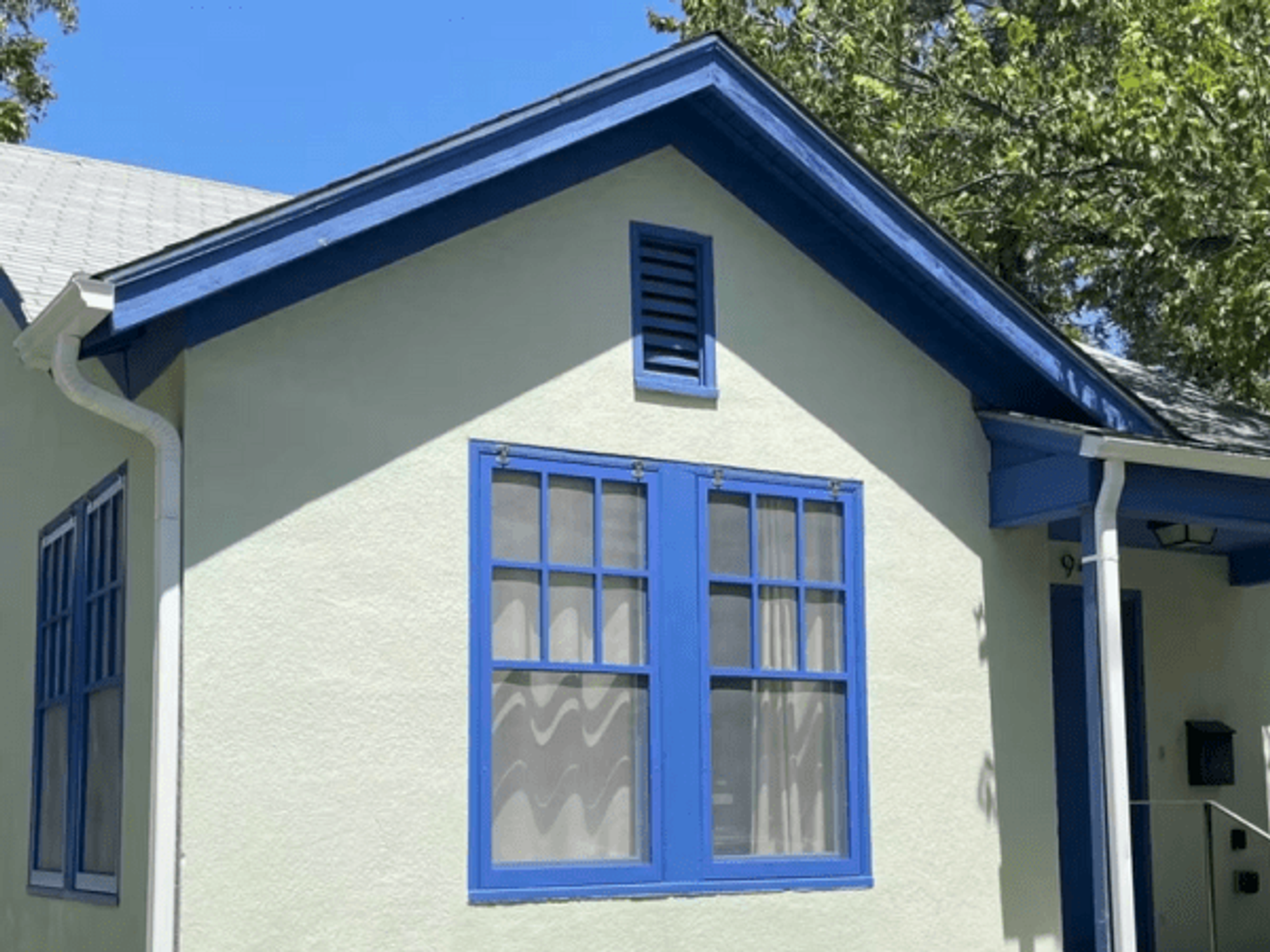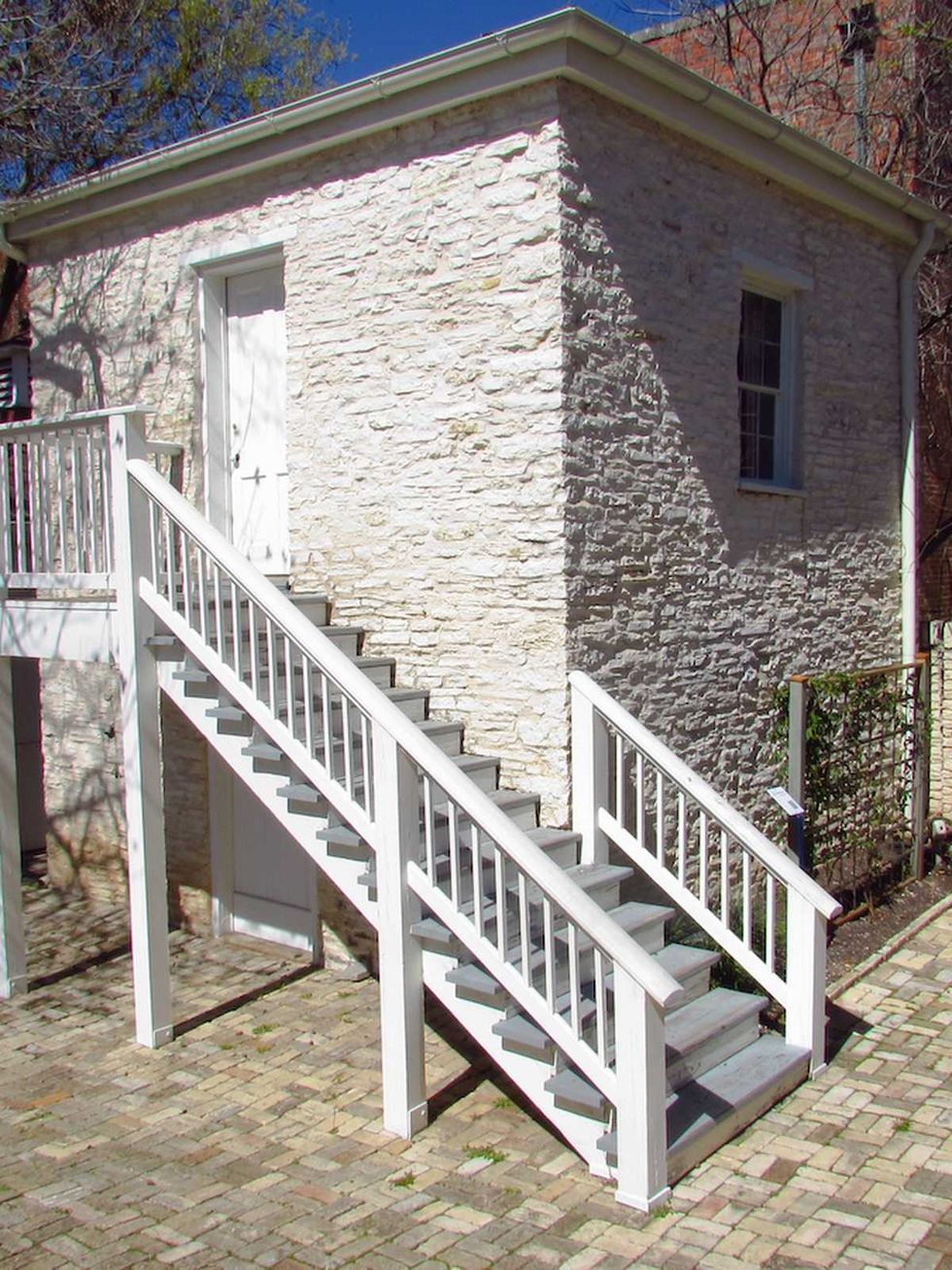Rodeo Austin
Cowboy up! 75 years (well who's counting?) of honoring Texas western heritageand giving
 A crowd at the Municipal Marlet House watches as a livestock judge (center)sizes up cattle during the 1943 show.
A crowd at the Municipal Marlet House watches as a livestock judge (center)sizes up cattle during the 1943 show. Cowboy hat wearing Stanley Arnhamn of Manor and Debbie Johnson of Round Rock eatcotton candy at the 1961 Austin Livestock Show fairgrounds.
Cowboy hat wearing Stanley Arnhamn of Manor and Debbie Johnson of Round Rock eatcotton candy at the 1961 Austin Livestock Show fairgrounds. Clinton Harlow, from Llano, and his border collie and cowboy monkey actentertained rodeo crowds during the 1970's.
Clinton Harlow, from Llano, and his border collie and cowboy monkey actentertained rodeo crowds during the 1970's. Exhibitors in the 1951 Travis County Junior Livestock show pose with theirwinning animals and a show official near the Citiy Coliseum.
Exhibitors in the 1951 Travis County Junior Livestock show pose with theirwinning animals and a show official near the Citiy Coliseum. Country-western musician George Strait competes in team roping during the 1990rodeo.Photo by Ralph Barrera
Country-western musician George Strait competes in team roping during the 1990rodeo.Photo by Ralph Barrera
The crowd of onlookers grew as the afternoon wore on. Sixteen head of beef cattle, calves actually, stood quietly just outside the State Capitol gates waiting to be judged. Downtown businessmen, politicians, shoppers — by the time it was over, a crowd of over 5,000 was on hand to cheer on Vernon Carson of Creedmoor.
Judges named his 755-pound calf the grand champion and the Night Hawk restaurant bought it for 27.5 cents per pound. In 1940, that was a lot of money for a little beef. And the crowd represented over five percent of Austin's population.
It was an auspicious beginning for what would become one of the largest and longest running charities in Austin.
This year the Star of Texas Fair and Rodeo and RodeoAustin celebrate their 75th Livestock show. Over 300,000 people will visit the grounds at the Travis County Expo Center and about $2 million will be funneled as scholarships to Texas students.
But back in 1940, rodeo and scholarships were the farthest thing from anyone's mind. "Back in the 1930’s, the [Austin] Chamber [of Commerce] thought it important enough to have an Agricultural Bureau be part of their economic development program," explains Liz Carmack, author of the newly published Blue Ribbons, Buckin' Broncs & Big Dreams — The Story of the Star of Texas Fair and Rodeo. "The original purpose was to educate farmers on how to fatten beef and do it locally."
Yes, "locally-sourced" food was a big deal even in 1940.
(You can read an excerpt of the book here)
“They didn’t know what their history was prior to the late 70’s they didn’t even know really where it began. As they move forward they wanted to know where they’ve been.”
The history
Carmack, a journalist from Oklahoma, now living in Austin, did a great deal of digging, uncovering a remarkable history, not just of the Fair and Rodeo, but of how intertwined that history became with the history of Austin as a whole.
The story of the organization involves the stories of so many of Austin's iconic businesses, philanthropists and community leaders. The Night Hawk restaurants, Kash-Karry stores, El Charro cafe, Roegelein, The Driskill, Capital Plaza, Louis Luedecke, Callahan's — all recognizable names to long-time Austin residents and all deeply involved in the history of the Livestock show.
The city of Austin even ran its own slaughterhouse until 1969. It was called the Austin Municipal Abattoir at the corner of East Fifth Street and Pleasant Valley, and it slaughtered the show beef for free.
"One of the coolest things I enjoyed doing on this book is that the story that’s told here wasn’t read and recounted from one place, it was in multiple places," says Carmack. "I'd get a little piece about an event from one source and that would lead me to something else and I could pull a piece from there and then a piece from here, and then I could recreate the whole story."
In 1938 Travis County was still a rural, agricultural area with over 2,600 farms. But the Chamber of Commerce was worried. Ranchers were shipping their calves outside the county to be fed, sometimes even out of state. The Chamber needed a way to educate farmers and ranchers and to get the local cattlemen using locally sourced feed. It was just good business. So in 1940, the Chamber held that not-so-small event across the street from the Capitol and the Baby Beef Show was born.
In the mid-forties the show moved into the City’s Municipal Market House, where the Austin Police Department stands today.
By the early 1950s, rodeo was added, and in 1952, Tex Ritter led the first Rodeo parade down Congress. The show filled up the old City Coliseum until the mid-80s when the Texas Exposition and Heritage Center was built specifically for the Livestock Show and Rodeo. It opened in 1984 with Willie Nelson as the opening act.
The show managed its way, in fits and starts through drought and bad economies — spectacular growth followed by near failure — for 73 years (more on that later).
"The folks that are involved in this organization are steeped in western heritage, in that culture, and so perhaps only in the last couple decades has it become apparent that most people don’t have that connection anymore.”
Education
Over those years and through all that change one common theme has stayed with the organization: “It’s always had a thread of education throughout the entire history of the organization,” said Carmack. “Over time its grown to educate not only in the field of agriculture, but it’s supporting young people in pursuing their educational goals whether they’re involved in agriculture or not.”
As the area became more urbanized, another theme, equally as important, arose.
“Now more people live in the cities than in rural areas, they don’t have a lot of connection with our western heritage. The folks that are involved in this organization are steeped in western heritage, in that culture, and so perhaps only in the last couple decades has it become apparent that most people don’t have that connection anymore.”
Money for kids
In 1981 the Austin Livestock Show and Rodeo introduced a formal scholarship program. Since that time the show has awarded over $5 million dollars to Texas students. It’s not a program you see when you head out to the fair, but it’s core to the mission of those volunteers who work the event for 3 weeks every year and the organization is one of the largest scholarship providers in Central Texas.
And the money for kids doesn’t end there. That first grand champion calf earned Vernon Carson, a young farm boy, over $200. Last year the Grand Champion auction earned Cuatro Schauer of Bee County $60,000. (Total auction money is now divided among all participants but you get the point.)
Over the course of 75 years, tens of millions of dollars have been turned over kids through involvement in agriculture or scholarships.
Doing the math
A side note: If you are at all decent at math, you might have already noticed the numbers don't add up. If the first Baby Beef show happened in 1940, the 75th annual show should come in 2014, right? (It would be way too easy to insert a bad Aggie joke here.)
As it happens, until Carmack did her research, everyone pretty much thought the first event happened in 1938. So, in 1988, the Austin-Travis County Livestock Show and Rodeo celebrated their 50th anniversary. Once that happened, there was no turning back.
“They thought the first show was in 1938. I didn’t find that. The Chamber started talking about having a show in 1938, but I did find that the first show was in 1940.”
“They didn’t know what their history was prior to the late 70’s they didn’t even know really where it began,” explains Carmack. “As they move forward they wanted to know where they’ve been.”
Thanks to Carmack, everyone knows now, and the children of Texas have benefited through scholarships and money raised by those who believe Texas heritage and Texas agriculture is important enough to celebrate.
---
Liz Carmack and RodeoAustin will hold a special public book launch party and book-signing, The Big Dreams Party, at 5:30 p.m. on Thursday, March 8 at The Driskill Hotel. Carmack, along with past-Presidents of the organization will be on hand to sign the book.

 The Neill-Cochran House Museum's mid-19th-century slave quarters received Planning and Historic Designation grant support for restoration and historical interpretation.Photo courtesy of Preservation Austin
The Neill-Cochran House Museum's mid-19th-century slave quarters received Planning and Historic Designation grant support for restoration and historical interpretation.Photo courtesy of Preservation Austin Built around 1863, the Henry G. Madison cabin in Rosewood Park received Bricks and Mortar grant support for preservation planning work.Photo courtesy of Preservation Austin
Built around 1863, the Henry G. Madison cabin in Rosewood Park received Bricks and Mortar grant support for preservation planning work.Photo courtesy of Preservation Austin